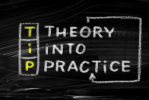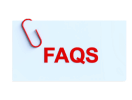Are you gearing up for a big interview? Feeling a mix of excitement and nervousness? Don’t worry – you’re not alone! Behavioral interviews are challenging, but with the right preparation, you’ll walk in confident and ready to shine.
Let’s dive into the world of behavioral interviews and discover why practice is your secret weapon for success.
- What is a Behavioral Interview?
- Why is Behavioral Interview Practice Important?
- How to Prep for a Behavioral Interview
- The STAR Method: Your Secret Weapon for Stellar Answers
- Common Behavioral Interview Questions and Sample Answers
- Behavioral Interview Practice Exercises and Tips
- Mock Interviews: Simulating the Real Deal
- Company Research and Position Analysis: Standing Out from the Crowd
- Storytelling and Examples: Crafting Compelling Narratives
- Handling Challenging or Unexpected Behavioral Questions
- Body Language and Non-Verbal Communication in Behavioral Interviews
- Adapting Behavioral Interview Techniques for Different Industries and Job Levels
- Virtual Behavioral Interviews: Navigating the Digital Landscape
- Post-Interview Reflection and Continuous Improvement
- Conclusion: Mastering Behavioral Interview Practice
- Frequently Asked Questions About Behavioral Interviews
Boost Your Interview Skills Now
Improve your interview skills in under 10 minutes!
Join thousands of successful job seekers!

What is a Behavioral Interview?
Picture this: You’re sitting across from your potential future boss, and instead of asking about your favorite color or where you see yourself in five years, they say, “Tell me about a time when you faced a difficult challenge at work.”
Welcome to the behavioral interview!
Definition and purpose
A behavioral interview is a type of job interview where you’re asked to provide specific examples of how you’ve handled situations in your past work experiences.
The idea is simple: your past behavior predicts your future performance.
These interviews are designed to dig deeper than traditional interviews. They’re not just about what you’ve done, but how you’ve done it. Employers want to see your thought process, your problem-solving skills, and how you navigate tricky situations.
How it differs from traditional interviews
Traditional interviews often focus on hypothetical situations: “What would you do if…?” Behavioral interviews flip the script and ask about real experiences: “Tell me about a time when you…” This shift makes a world of difference.
Instead of talking about what you might do, you’re sharing stories about what you’ve actually done. It’s like the difference between describing how you’d bake a cake and showing off a delicious cake you’ve already made.
Which do you think is more convincing?
Why employers use behavioral interviews
Employers love behavioral interviews for good reason:
- They’re predictive: Past behavior is a strong indicator of future performance.
- They’re specific: You can’t just wing it with vague answers. You need to provide concrete examples.
- They reveal soft skills: Things like leadership, teamwork, and problem-solving shine through in these interviews, which hiring managers use to assess candidates.
- They’re fair: Every candidate is asked similar questions, making it easier to compare responses.
So, now that you know what you’re up against, let’s talk about why practicing for these interviews is so crucial.

Why is Behavioral Interview Practice Important?
You wouldn’t run a marathon without training, right? The same goes for behavioral interviews. Practice isn’t just helpful – it’s essential.
Here’s why:
Boosting confidence and reducing anxiety
Let’s face it: interviews can be nerve-wracking. But you know what helps calm those jitters? Being prepared. When you’ve practiced your responses, you’ll feel more confident walking into that interview room (or logging into that Zoom call).
Think about it: If you’ve already thought through your experiences and crafted compelling stories, you won’t be caught off guard by questions. You’ll be ready to share your achievements with poise and confidence. And trust me, confidence is contagious – when you feel good, your interviewer will pick up on that positive energy.
Improving response quality and relevance
Practice doesn’t just make you feel more confident – it actually makes your answers better, which is crucial for the interview process. How? By giving you time to reflect on your experiences and choose the most relevant stories. Practicing your responses also helps you refine your communication skills, ensuring you can convey your experiences clearly and persuasively.
When you’re put on the spot, it’s easy to ramble or forget important details.
But when you’ve practiced, you can deliver concise, powerful responses that directly address the question at hand.
You’ll be able to highlight your skills and achievements in a way that resonates with the interviewer.
Identifying personal strengths and areas for improvement
As you practice, you’ll start to notice patterns in your experiences. Maybe you’re great at defusing conflicts but struggle with time management. This self-awareness is gold! It helps you:
- Emphasize your strengths during the interview
- Prepare for questions about your weaknesses
- Focus on improving areas where you’re less confident
Leveraging technology: Introduction to Skillful Talk’s AI-powered practice
Now, here’s where things get really exciting. Imagine having a personal interview coach available 24/7, ready to give you detailed feedback on everything from your tone of voice to your facial expressions. That’s exactly what Skillful Talk offers.
Skillful Talk is an AI-powered app that takes your interview practice to the next level. Here’s how it works:
- You record yourself answering behavioral interview questions.
- The AI analyzes your responses, looking at factors like your language use, body language, and tone of voice.
- You get comprehensive feedback, helping you fine-tune your answers and presentation.
It’s like having a mock interview with a super-smart, always-available interviewer. Plus, you can practice as much as you want without feeling self-conscious.
It’s a game-changer for your interview prep!
Remember, the goal of all this practice isn’t to memorize scripts. It’s about becoming comfortable sharing your experiences in a clear, engaging way. With each practice session, you’re not just preparing for an interview – you’re investing in your future career success.

How to Prep for a Behavioral Interview
Alright, you’re convinced that practice is key. But where do you start? Don’t worry, we’ve got you covered. Let’s break down the preparation process into manageable steps.
Analyzing the job description
Your first step? Become best friends with that job description. Here’s why:
- It’s your roadmap to what the employer is looking for
- It hints at the skills and experiences they’ll ask about in the interview
Grab a highlighter (or use your favorite digital tool) and mark key phrases like “team leadership,” “problem-solving,” or “client relations.” These are your clues to the types of behavioral questions you might face.
Identifying key competencies
Once you’ve dissected the job description, make a list of the top 5-7 competencies the role requires. These might include:
- Leadership
- Communication
- Adaptability
- Problem-solving
- Time management
These competencies will guide your preparation. For each one, you’ll want to have at least one solid example from your past experiences.
Brainstorming relevant experiences
Now comes the fun part – story time! For each competency, brainstorm experiences from your work history, education, internships, or even volunteer work that demonstrate that skill. Consider times when you had to manage multiple projects simultaneously, demonstrating your ability to prioritize and stay organized.
Don’t just think about the big wins. Sometimes, a challenging situation where you learned a valuable lesson can be just as impactful. The key is to choose experiences that show your growth and capabilities.
Creating a “success stories” bank
Think of this as your personal library of professional anecdotes. For each story, jot down:
- The situation you faced
- The task you needed to accomplish
- The actions you took
- The results you achieved
Sound familiar? That’s right, we’re setting you up for the STAR method, which we’ll dive into next.
Pro tip: Use Skillful Talk to record these stories. The AI feedback can help you refine your delivery and ensure you’re hitting all the key points effectively.

The STAR Method: Your Secret Weapon for Stellar Answers
You’ve got your stories ready. Now, let’s talk about how to deliver them in a way that will knock the interviewer’s socks off. Enter the STAR method.
Breaking down STAR: Situation, Task, Action, Result
STAR isn’t just a nice acronym – it’s a powerful framework for structuring your answers. Here’s what each letter stands for:
- Situation: Set the scene. Where were you working? What was the context?
- Task: What was your responsibility or challenge in this situation?
- Action: What specific steps did you take to address the task?
- Result: What was the outcome of your actions? Quantify if possible!
How to structure your responses using STAR
Let’s put STAR into action with a quick example:
Question: “Tell me about a time when you had to meet a tight deadline.”
Situation: “In my previous role as a marketing coordinator, we had a major product launch scheduled for the end of the quarter.”
Task: “Two weeks before the launch, our graphic designer fell ill, leaving us without crucial visual assets for our campaign.”
Action: “I reached out to my network and found a freelance designer available for a short-term project. I then prioritized the most critical assets, provided clear briefs, and set up daily check-ins to ensure we stayed on track.”
Result: “We completed all essential visuals on time, and the product launch was a success. Our campaign engagement rates were 20% higher than previous launches, which our CEO attributed to the compelling visuals we produced under pressure.”
See how STAR helps you tell a complete, compelling story? It guides the interviewer through your experience step-by-step, showcasing your skills and the impact of your actions.
Common mistakes to avoid when using STAR
While STAR is incredibly effective, there are a few pitfalls to watch out for:
- Rambling: Stick to the relevant details. Your answer should typically be 1-2 minutes long.
- Focusing too much on the situation: The ‘Action’ and ‘Result’ are the meat of your answer. Don’t spend too long setting the scene.
- Forgetting the result: Always circle back to the outcome. If possible, use numbers to quantify your success.
- Using the same story repeatedly: Have a variety of examples ready to showcase different skills.
Practice exercise: Turning a basic answer into a STAR response
Ready to put STAR into practice? Here’s a quick exercise:
- Think of a recent accomplishment at work or school.
- Write down a basic description of what happened in 2-3 sentences.
- Now, rewrite your answer using the STAR method.
- Record your STAR response using Skillful Talk.
- Review the AI feedback. How can you refine your answer to make it even more impactful?
Remember, the STAR method isn’t about creating a rigid script. It’s a flexible tool to help you organize your thoughts and deliver clear, concise, and compelling answers. With practice, it’ll become second nature, allowing you to adapt to any behavioral question that comes your way.
In our next section, we’ll dive into some common behavioral interview questions and provide sample answers to inspire your own responses. Ready to become a STAR storyteller? Let’s keep going!

Common Behavioral Interview Questions and Sample Answers
Now that you’re armed with the STAR method, let’s tackle some frequently asked behavioral interview questions. Remember, these are just examples – your answers should reflect your unique experiences and personality.
Leadership and teamwork
Sample question: “Tell me about a time when you led a team through a challenging project.”
“In my role as a project manager at TechInnovate, we were tasked with implementing a new customer relationship management (CRM) system across the company. (Situation)
My responsibility was to lead a cross-functional team of 10 members to complete the implementation within three months, ensuring the entire team was informed and engaged. The challenge was that team members had varying levels of technical expertise and were from different departments. (Task)
To address this, I first conducted a skills assessment of the team. Based on this, I created mixed-skill subgroups, pairing tech-savvy members with those less familiar with CRM systems. I also implemented a weekly ‘knowledge share’ session where team members could present their progress and challenges.
To keep us on track, I used project management software to set clear milestones and deadlines. I also scheduled regular check-ins with department heads to ensure the new system was meeting their needs. (Action)
As a result, we successfully implemented the CRM system two weeks ahead of schedule. User adoption rate reached 95% within the first month, exceeding our goal of 80%. The CEO commended our team’s effort, noting that the new system increased sales team efficiency by 30% in the following quarter. (Result)”
Problem-solving and decision-making
Sample question: “Describe a situation where you had to make a difficult decision with limited information.”
“During my time as a project manager at InnoTech Solutions, we were in the final stages of developing a new software product for a major client. Two weeks before the delivery deadline, we discovered a significant bug that affected the core functionality of the product. (Situation)
As the project manager, I had to decide whether to inform the client and potentially delay the launch, or to push the team to fix the issue within the original timeframe. We had limited information about the full extent of the bug and its potential solutions. (Task)
To tackle this, I first gathered my core team for an emergency meeting. We conducted a rapid impact assessment, evaluating the bug’s effects and estimating the time needed for a fix. I also consulted with our legal department about the implications of delaying versus delivering a product with known issues.
Given the tight timeline, I made the decision to:
- Inform the client about the issue immediately
- Propose a revised timeline with a two-week extension
- Offer a discount on future maintenance as a goodwill gesture
- Reallocate resources from other projects to support this critical fix
This decision was difficult because it meant potentially damaging our relationship with the client and impacting other projects. However, I believed it was the most ethical and practical solution given our limited information. (Action)
The outcome was ultimately positive. The client appreciated our transparency and agreed to the revised timeline. Our team worked overtime and managed to resolve the bug within 10 days. We delivered a fully functional product that exceeded the client’s expectations.
This experience taught us valuable lessons about our development process. We implemented new testing protocols to catch similar issues earlier. The client was so impressed with our handling of the situation that they signed a contract for two additional projects the following year. (Result)“
Remember, these are just starting points. Use Skillful Talk to practice delivering these answers, paying attention to your tone, pace, and body language. The AI feedback will help you refine your responses until they feel natural and impactful.
When practicing this answer with, pay particular attention to:
- Your tone when discussing the challenge – aim for a balance of seriousness about the issue and confidence in your problem-solving abilities.
- Your pacing when explaining your decision-making process – ensure you’re giving enough detail without rushing.
- Your body language when describing the positive outcome – let your enthusiasm show in your facial expressions and gestures.
The AI can provide valuable insights on these elements, helping you craft a compelling narrative that showcases your decision-making skills under pressure.
Adaptability and flexibility
Sample question: “Give an example of how you adjusted to a major change in your work environment.”
“In my previous role as a marketing specialist at TechGrow, our company underwent a major digital transformation, shifting all our processes to a new cloud-based system. (Situation)
My task was to not only adapt to this new system myself but also to ensure my team of five could effectively use it for our marketing campaigns. (Task)
To tackle this challenge, I first immersed myself in learning the new system, dedicating extra hours to complete all available online training. Then, I created a simplified guide tailored to our team’s specific needs. I organized daily 30-minute sessions where we’d explore a new feature together and discuss how to apply it to our work.
To ensure smooth adoption, I also set up a buddy system within the team, pairing those who picked up the system quickly with those who needed extra support. Additionally, I scheduled weekly check-ins with each team member to address any ongoing challenges. (Action)
As a result, our team fully adapted to the new system within a month, two weeks ahead of the company’s timeline. We were able to launch our next marketing campaign using the new system without any delays. Our efficiency actually increased by 20% in the following quarter, as the new system streamlined many of our processes. The IT department commended our team’s smooth transition and used our approach as a model for other departments. (Result)“
Communication and interpersonal skills
Sample question: “Tell me about a time when you had to explain a complex concept to someone with no background in your field.”
“As a data scientist at HealthTech Solutions, I was working on a machine learning model to predict patient readmission rates. Our CEO, who had a background in hospital administration but not in data science, requested a presentation on the project. (Situation)
My challenge was to explain our complex model and its implications in a way that would be clear and actionable for the CEO and other non-technical stakeholders. (Task)
To approach this, I first identified the key points that would be most relevant to the business side of our operations. Then, I created a visual presentation that used analogies and real-world examples to illustrate the concepts.
For instance, I compared our machine learning model to a highly experienced nurse who has seen thousands of patients and can intuitively predict which ones might return. But our ‘digital nurse’ could do this at scale, for every patient in the hospital.
I also prepared a demo that showed how the model would work in practice, using anonymized patient data. Throughout the presentation, I encouraged questions and used the CEO’s healthcare background as a bridge to explain data science concepts. (Action)
The presentation was a success. The CEO later told me it was the first time he had truly understood how machine learning could impact our business. He approved additional resources for our project and asked me to present to the board of directors.
This presentation led to the company-wide adoption of our model, which ultimately reduced patient readmission rates by 15% in the first year of implementation. (Result)“

Behavioral Interview Practice Exercises and Tips
Now that you’ve seen some sample answers, it’s time to develop your own. Here are some exercises and tips to elevate your behavioral interview game.
Self-reflection techniques
Before you start crafting answers, take some time for self-reflection:
- Career timeline: Create a timeline of your career, noting major projects, challenges, and achievements.
- Skill inventory: List your top skills and match them with specific examples from your experience.
- Values assessment: Identify your core professional values. How have these guided your decisions and actions?
These exercises will help you identify your most impactful stories and ensure your answers align with your professional brand.
Journaling your experiences
Keep a “work wins” journal. Regularly jot down:
- Challenges you’ve overcome
- Projects you’re proud of
- Positive feedback you’ve received
- Lessons learned from mistakes
This ongoing record will be a goldmine when you’re preparing for interviews.
Peer practice sessions
Find a study buddy! Consider setting up regular one on one meetings with your practice partner to provide consistent feedback and improve your responses. Take turns asking each other behavioral questions and providing feedback. Pay attention to:
- Clarity of the story
- Relevance to the question
- Body language and tone
- Use of the STAR method
Using Skillful Talk for AI-powered feedback
Here’s where Skillful Talk becomes your secret weapon:
- Set up mock interviews on Skillful Talk, focusing on different competencies each time.
- Record your responses to a variety of behavioral questions.
- Review the AI-generated feedback on your language use, tone, and body language.
- Pay special attention to:
- Filler words (um, uh, like)
- Speaking pace
- Eye contact and facial expressions
- Hand gestures
- Use the insights to refine your responses and delivery.
All of these and more are available in the report that is generated after you take the training.

Mock Interviews: Simulating the Real Deal
You’ve practiced your STAR responses and honed your stories. Now it’s time to put it all together in a mock interview. This is where the rubber meets the road, giving you a taste of the real interview experience.
Finding a mock interview partner
Your ideal mock interviewer should be:
- Someone you respect professionally
- Familiar with your industry (if possible)
- Willing to give honest, constructive feedback
Consider reaching out to:
- A trusted colleague, mentor, or team manager who can provide valuable feedback
- A career coach
- A friend in a similar field
Can’t find a suitable partner? Don’t worry – Skillful Talk’s AI interviewer is always ready to step in!
Setting up a realistic interview environment
Make your mock interview as authentic as possible:
- Dress as you would for the real interview
- Choose a quiet, professional-looking space
- If using video, test your camera and microphone beforehand
- Have a copy of your resume and the job description handy
Giving and receiving constructive feedback
After the mock interview:
- Self-evaluate first. What went well? Where did you stumble?
- Listen to your partner’s feedback without defensiveness
- Ask specific questions: “How was my body language?” “Did my examples seem relevant?”
- If using Skillful Talk, review the AI-generated feedback thoroughly
Remember, feedback is a gift.
It’s not about criticism – it’s about improvement.
Recording and reviewing your performance
Whether you’re working with a human partner or Skillful Talk, always record your mock interviews. Why?
- You can review your performance objectively
- You might notice things you missed in the moment
- You can track your improvement over time
When reviewing:
- Watch your body language and facial expressions
- Listen for filler words or nervous habits
- Note any questions that threw you off
- Identify strong answers you want to refine further
With Skillful Talk, you get the added benefit of AI-powered analysis. Pay special attention to:
- Your tone of voice and its changes throughout the interview
- The pacing of your responses
- Your use of industry-specific language
- The structure of your answers (Are you consistently using STAR?)
Use these insights to create a focused improvement plan for your next practice session.
Boost Your Interview Skills Now
Improve your interview skills in under 10 minutes!
Join thousands of successful job seekers!

Company Research and Position Analysis: Standing Out from the Crowd
You’ve got your interview skills polished. Now, let’s focus on tailoring your responses to the specific company and role you’re targeting. This is how you move from being a good candidate to being the perfect fit.
Digging deep into company culture and values
Go beyond the “About Us” page:
- Follow the company on social media
- Read recent press releases and news articles
- Check out employee reviews on sites like Glassdoor
- Look for interviews with company leaders
What you’re looking for:
- The company’s mission and values
- Recent achievements or challenges
- The work environment and culture
Aligning your experiences with company needs
Revisit the job description and company research. For each key requirement or value:
- Identify a relevant experience from your “success stories” bank
- Refine your STAR response to highlight aspects that align with the company’s needs
- Practice delivering these tailored responses using Skillful Talk
For example, if the company emphasizes innovation, focus on times you’ve introduced new ideas or processes in your work.
Tailoring your responses to the specific role
Different roles require different emphases:
- For a management position, highlight leadership and strategic thinking
- For a technical role, focus on problem-solving and specific technical achievements
- For a customer-facing role, emphasize communication and relationship-building skills
Use Skillful Talk to practice adjusting your language and examples for different types of roles. The AI can help you identify when you’re using jargon that might not fit the position.
Preparing thoughtful questions for the interviewer
Remember, an interview is a two-way street. Prepare questions that show:
- You’ve done your research
- You’re genuinely interested in the role and company
- You’re thinking critically about how you can contribute
Some examples:
- “I read about your recent expansion into [market]. How does this role contribute to that initiative?”
- “Your company values mention [specific value]. Can you give me an example of how that plays out in day-to-day work?”
- “What does success look like in this role after the first 6 months?”
By thoroughly researching the company and tailoring your responses, you’re not just preparing for the interview – you’re positioning yourself as the ideal candidate who already understands and aligns with the company’s mission and needs.

Storytelling and Examples: Crafting Compelling Narratives
You’ve got your experiences lined up and your STAR responses ready. Now, let’s transform them into stories that captivate your interviewer and showcase your unique value.
Elements of a good story in an interview context
A compelling interview story should:
- Be relevant to the question and role
- Have a clear beginning, middle, and end
- Highlight your specific contributions and skills, and how you collaborated with each team member
- Demonstrate positive outcomes or lessons learned
Remember, you’re not writing a novel – keep your stories concise and impactful.
Balancing detail and conciseness
The key is to provide enough detail to paint a picture, without getting bogged down in unnecessary information. Here’s how:
- Start with a brief context-setting sentence
- Focus on your actions and decision-making process
- Highlight 2-3 key details that illustrate your skills
- Wrap up with clear, quantifiable results if possible
Using vivid language and sensory details
Bring your stories to life with:
- Action verbs: “I spearheaded,” “We transformed,” “I negotiated”
- Specific numbers: “Increased efficiency by 30%,” “Managed a team of 12”
- Sensory details: “The conference room was buzzing with excitement”
But remember, authenticity is key. Use language that feels natural to you.
Practice exercise: Turning a work accomplishment into an engaging story
- Choose a significant work accomplishment
- Write it out using the STAR method
- Identify places where you can add vivid details or sensory information
- Practice telling the story out loud, aiming for a 1-2 minute delivery
- Refine your story based on the feedback, focusing on pacing, clarity, and engagement

Handling Challenging or Unexpected Behavioral Questions
Even with thorough preparation, you might encounter questions that catch you off guard. Don’t panic! Here’s how to handle them with grace.
Strategies for buying time to think
It’s OK to take a moment to gather your thoughts. Try these techniques:
- Repeat or rephrase the question
- Say, “That’s an interesting question. Let me think about that for a moment.”
- Take a sip of water (if available)
Redirecting questions you’re unsure about
If you’re asked about a situation you haven’t experienced, try:
- Acknowledging the situation’s importance
- Offering a related experience
- Explaining how you would handle it based on your skills and knowledge
For example: “While I haven’t directly managed a team of that size, I did lead a cross-functional project involving 15 team members from different departments. In that situation, I…”
Addressing negative experiences positively
When asked about failures or conflicts:
- Be honest but brief about the negative aspect
- Focus on what you learned and how you’ve grown
- Explain how you’d handle the situation differently now
Sample challenging questions and approaches
“Tell me about a time you failed.”
Approach: Briefly describe the situation, focus on your response and learning, and share how you’ve applied that lesson since.
“Describe a time when you disagreed with your boss.”
Approach: Emphasize respectful communication, your rationale, and how you reached a resolution or compromise.
“What’s your biggest weakness?”
Approach: Choose a genuine area for improvement, explain how you’re working on it, and share progress you’ve made.
“Tell me about a time you had to work with a difficult colleague.”
Approach: Focus on your strategies for collaboration, not on criticizing the colleague. Highlight positive outcomes or lessons learned.
Remember, the key to handling unexpected questions is to stay calm, be authentic, and always bring the focus back to your skills, growth, and positive impact.

Body Language and Non-Verbal Communication in Behavioral Interviews
Your words tell only part of the story. Your body language can reinforce your message or undermine it. Let’s make sure it’s working in your favor.
Maintaining eye contact and positive posture
- Eye contact: Aim for the 50/70 rule – make eye contact 50% of the time when speaking and 70% when listening.
- Posture: Sit up straight but not rigid. Lean slightly forward to show engagement.
Using hand gestures effectively
- Keep gestures natural and contained within your “power sphere” – the area from your chin to your waist.
- Use open palm gestures to convey honesty and openness.
- Avoid fidgeting or repetitive movements that can distract from your words.
Reading the interviewer’s non-verbal cues
Pay attention to:
- Nodding and smiling (engagement)
- Furrowed brows (confusion or disagreement)
- Checking the time or looking away frequently (disinterest)
Adjust your responses accordingly:
- If they seem confused, pause and ask if they’d like clarification.
- If they seem disinterested, try to bring the conversation back to the job requirements.
Tips for virtual interview body language
Virtual interviews present unique challenges:
- Position your camera at eye level for a natural gaze.
- Frame yourself from the chest up to allow for visible hand gestures.
- Choose a neutral, professional background.
- Ensure good lighting on your face.

Adapting Behavioral Interview Techniques for Different Industries and Job Levels
One size doesn’t fit all in behavioral interviews. Let’s explore how to tailor your approach based on the specific context of your interview.
Entry-Level vs. Executive Interviews
Entry-level:
- Focus on academic projects, internships, and extracurricular leadership roles.
- Emphasize eagerness to learn and adaptability.
- Prepare examples of how you’ve taken initiative or gone above and beyond.
Executive:
- Highlight strategic decision-making and long-term impacts.
- Prepare stories that showcase your leadership philosophy and ability to drive organizational change.
- Be ready to discuss industry trends and your vision for the role.
Industry-specific behavioral questions
Different industries often focus on different competencies:
Tech:
- Problem-solving and innovation
- Adapting to rapid change
- Collaborating in cross-functional teams
Finance:
- Attention to detail and accuracy
- Ethical decision-making
- Managing risk and compliance
Healthcare:
- Patient care and empathy
- Working under pressure
- Adhering to protocols while thinking critically
Prepare industry-specific examples and practice them using Skillful Talk. The AI can help you incorporate relevant jargon naturally and authentically.
Tailoring your approach to company size and culture
Startups:
- Emphasize versatility and willingness to wear many hats.
- Highlight experiences of working in fast-paced, ambiguous environments.
- Showcase self-motivation and ability to work with limited resources.
Large corporations:
- Focus on collaboration and navigating complex organizational structures.
- Emphasize experiences with standardized processes and systems.
- Highlight any experience with change management or process improvement.
Remember, the key to adapting your interview style is research. Use the company’s website, social media, and networking contacts to understand their specific culture and needs. Then, use Skillful Talk to practice tailoring your responses to fit that context perfectly.

Virtual Behavioral Interviews: Navigating the Digital Landscape
With remote work becoming more common, virtual interviews are here to stay. Let’s make sure you’re prepared to shine, even through a screen.
Setting up your space for success
Create a professional virtual environment:
- Choose a quiet location with a neutral background
- Ensure good lighting – natural light is best, but a ring light can work wonders
- Position your camera at eye level for a flattering angle
- Test your audio and video quality before the interview
Technical considerations and backup plans
Prepare for potential tech issues:
- Test your internet connection – consider using a wired connection for stability
- Close unnecessary programs to avoid slowing down your device
- Have the interviewer’s phone number handy in case of connection issues
- Practice sharing your screen if you need to present anything
Backup plan: “If we get disconnected, I’ll try reconnecting immediately. If that doesn’t work, I’ll call you at the number you provided.”
Building rapport in a virtual environment
It’s harder to connect through a screen, so make an extra effort:
- Look directly into the camera to simulate eye contact
- Use facial expressions and nod to show you’re engaged
- Pause slightly before responding to avoid talking over the interviewer
- Use the interviewer’s name occasionally to personalize the conversation
Practice exercise: Conducting a mock virtual interview
- Set up your space as you would for a real interview
- Choose a set of behavioral questions in Skillful Talk
- Conduct a full mock interview, treating it as real
- Review the AI feedback on your verbal and non-verbal communication
- Pay special attention to your eye contact, facial expressions, and any background distractions
- Refine and repeat until you feel confident in your virtual interview skills
Remember, the key to a successful virtual interview is to make technology invisible. When you’re well-prepared, you can focus on showcasing your experiences and building a connection with the interviewer, regardless of the medium.

Post-Interview Reflection and Continuous Improvement
The interview might be over, but your learning journey isn’t. Let’s explore how to turn each interview experience into a stepping stone for future success.
Self-assessment techniques
Immediately after the interview:
- Write down the questions you were asked
- Rate your performance on each question (1-5 scale)
- Note any questions that caught you off guard
- Reflect on your overall feelings about the interview
Learning from each interview experience
For each interview, ask yourself:
- What went well? What didn’t go as planned?
- Did I effectively showcase my skills and experiences?
- Were there any questions I struggled with?
- How well did I connect with the interviewer?
Seeking and incorporating feedback
If possible, ask the interviewer or recruiter for feedback. Whether you get the job or not, this information is invaluable.
When receiving feedback:
- Listen without becoming defensive
- Ask for specific examples
- Thank the person for their insights

Conclusion: Mastering Behavioral Interview Practice
Congratulations! You’ve made it through our comprehensive guide to behavioral interview practice. Let’s recap the key strategies we’ve covered:
Recap of key strategies
- Understand the STAR method and use it consistently
- Build a bank of adaptable “success stories”
- Research the company and tailor your responses
- Practice, practice, practice – both verbally and non-verbally
- Master the art of storytelling in your responses
- Adapt your approach for different industries and job levels
- Prepare for virtual interviews with the same rigor as in-person ones
- Reflect and improve after each interview experience
Encouragement and motivation for ongoing practice
Remember, becoming a behavioral interview expert is a journey, not a destination. Each practice session, each interview, is an opportunity to refine your skills and boost your confidence.
With tools like Skillful Talk at your disposal, you have the power to transform your interview performance. The AI-powered feedback allows you to identify and work on specific areas of improvement, giving you a competitive edge in the job market.
Remember, the candidate who gets the job isn’t always the most qualified – it’s often the one who best communicates their value. With consistent practice and the insights provided by Skillful Talk, you’re equipping yourself to be that candidate.
So, are you ready to take your behavioral interview skills to the next level? Your dream job is out there, and with these strategies and tools, you’re now better prepared than ever to seize it.
Start your practice session with Skillful Talk today, and take the first step towards interview mastery. Your future self will thank you!

Frequently Asked Questions About Behavioral Interviews
Let’s address some common concerns and questions that many candidates have about behavioral interviews.
Boost Your Interview Skills Now
Improve your interview skills in under 10 minutes!
Join thousands of successful job seekers!


